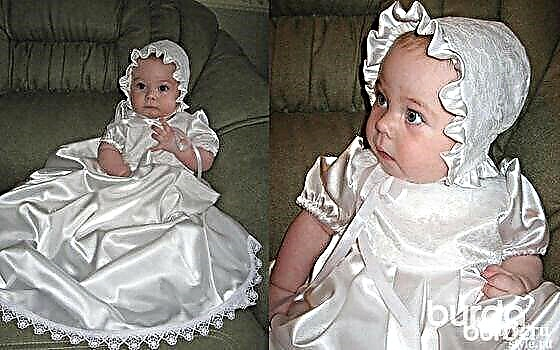In our selection there are detailed workshops on sewing different models of pillowcases, sheets and duvet covers, plus tips for choosing fabrics and caring for ready-made linen. Bonus: life hacks for a healthy sleep.
There are many reasons to start sewing bedding with your own hands.

Photo: gaikindo.org
Firstly, despite the wide selection of ready-made kits, we often may not be satisfied with something, not allowing us to make a choice. Beautiful colors - but do not like the composition of the fabric, excellent material, but the size or number of objects does not fit, everything is perfect - but the price is too high ...
Secondly, a do-it-yourself kit will not only suit you and your bed in all respects, but will become the only and unique author's. By the way, you can sew several sets of combining fabrics and change the set of sets according to your mood. Or, to sew a set not with one sheet / set of pillowcases, but with two: some like to change them once every few days, more often than a duvet cover.

Photo: visaopanoramica.com
And thirdly, even a beginning seamstress can sew bedding.
We wrote in detail about how to sew individual items of bed linen in detailed master classes, and now have assembled them into a single collection for your convenience.
How to choose a fabric for sewing bed linen?
But first, a little about choosing fabrics.
For bedding, fabrics made from natural fibers are recommended.
Here are their main features, pros and cons:
- Silk
Delicate, pleasant, luxurious, sophisticated. But: expensive, difficult to care for and work.

Photo: pinterest.com
- Linen
Eco-friendly and durable. But: it can be rude, for children or people with sensitive skin is not suitable. On the other hand, the rough structure provides a massage effect - if it suits you.

Photo: bedlinen123.com
- Cotton
Practical, hygroscopic, convenient. But: it is better to choose a fabric of good quality.

Photo: kingofcotton.com
- bamboo
Soft, pleasant to the touch. But: you need a delicate wash.

Photo: designtwins.com
- Wood pulp
From it make modern tensel material. Tencel is very comfortable, pleasant and durable. Minus - a fairly high price.

Photo: potterybarn.com
Fabrics:
Perfect for bedding, satin, poplin, cambric, tensel, "cotton silk" mako-sateen (it is made from elite cotton mako), soft and durable 100-cotton ranfors. Calico and chintz are cheaper, but lose their appearance faster, and they may not be so pleasant to the touch - however, these fabrics also come in different qualities. Someone likes sets or single items of terry cloth or soft flannel.

Photo: homecrux.com
Fabric Width:
Typically, fabrics for bedding have a width of 220-240 cm.It is not recommended to choose a smaller width (if you are not sewing a children's kit): extra seams on the bedding are uncomfortable during operation, and complicate the work, and make the linen last not so long.

Photo: azactions.com
Sew our own bedding: a selection of workshops
1. How to sew a sheet with your own hands: a master class

This workshop provides detailed instructions for making a simple sheet, from choosing a fabric and taking measurements to tips on how to fix the corners of a finished long sheet.
2. How to sew a sheet on an elastic band: a master class

Photo: craftsy.com
The advantages of a sheet on an elastic band are obvious: it does not go astray, does not frown and always looks neat. Sewing such a sheet is easy - follow the steps shown in the master class.
3. How to sew a “classic” pillowcase: master class + video

Photo: home-garden.favourably.co
The most popular and uncomplicated model is a pillowcase with a flap on the side. Follow the instructions and in half an hour the pillowcase will be ready. For clarity, there is a video.
4.How to sew a pillowcase with a smell: a master class

Photo: pinterest.com
An option similar to the previous one, only the valve at the pillowcase is located not at the side, but at the back.
5. How to sew a pillowcase with "ears": a master class

Photo: thehomesihavemade.com
This model is a bit more complicated, but it looks more elegant and elegant. Sewing such a pillowcase is also easy: follow the instructions of the master class.
6. How to sew a pillowcase with a zipper: a master class

Photo: quiltingintherain.com
A pillowcase with a zipper is not the most common option for bedding. But if you want the pillow to be securely fixed inside, you can choose it. Use the most subtle invisible zipper.
7. How to sew a duvet cover: a master class

Photo: craftsy.com
A simple and universal way to sew a duvet cover is in a step-by-step master class.
8. How to sew a mattress cover with your own hands: 2 master classes

Photo: pinterest.com
The mattress cover can be worn on the mattress like a cover, or hold on to the corners due to the elastic bands. Choose your model and follow the instructions - it’s easy to sew a mattress cover!
9. A set of baby bedding from a flannel: a master class

Photo: BurdaStyle.ru
This master class tells you how to sew a duvet cover (200x135 cm) and pillowcases (80x80 cm) for a crib. Including patterns and tips are given for cutting from fabric to cage.
10. Set of children's underwear: master class

Photo: BurdaStyle.ru
Another workshop on sewing baby bedding: a duvet cover 200x135 cm, pillowcases 50x50 and 80x80 cm.
11. How to care for bedding

Photo: everythingsummercamp.com
Tips for choosing fabric and caring for finished bedding from a process engineer and sewing teacher Svetlana Khatskevich.
12. Proper sleep: secrets and tips

Photo: pixabay.com
Finally - an article on how to help yourself fall asleep quickly, sleep well and generally sleep correctly. How can blackout curtains, a contrast shower, a glass of milk or a slice of cheese help healthy sleep? Answers - in the material by reference.



